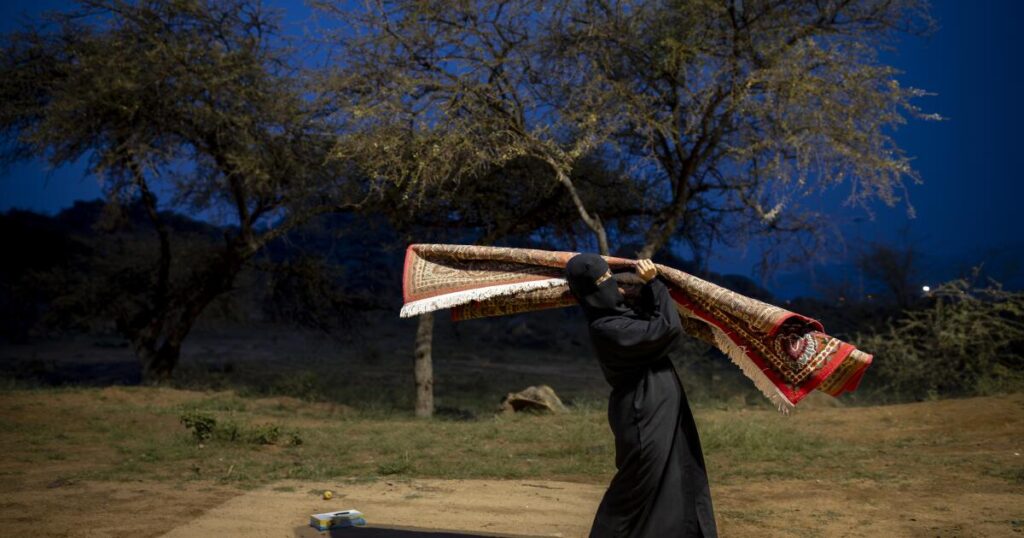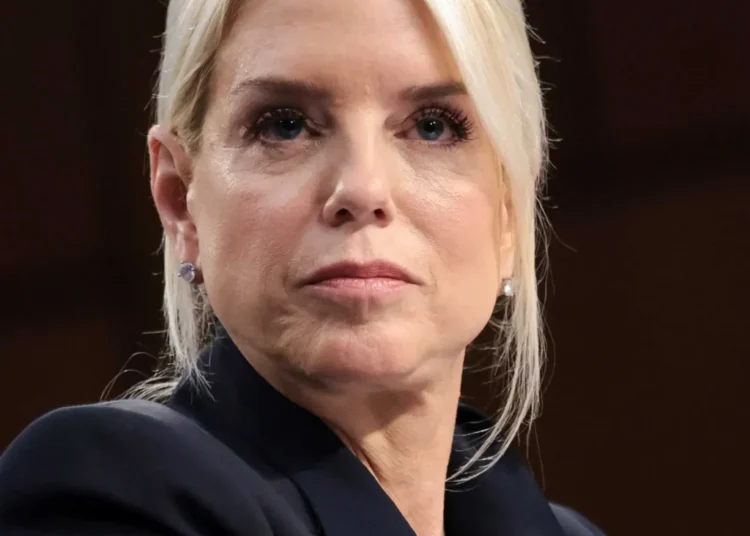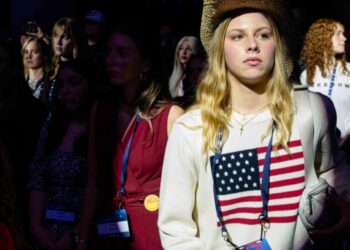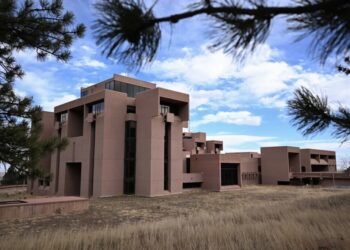ABHA, Saudi Arabia — From the air, Abha’s mountains emerge as a shock of emerald green rising from a sea of sand. Terra firma brings other surprises: a bracing wind that has me grabbing for a jacket — a piece of clothing all but ignored in other parts of Saudi Arabia.
Indeed, so much of Abha, the capital of the southwestern province of Asir, seems a world away — and two dozen degrees cooler — from the scorching desert that dominates Western notions of the kingdom.
I’m here as a tourist — and Saudi Arabia hopes for many more. The government is spending nearly $1 trillion to make attractive what, just over a decade ago, was one of the most tourist-averse countries on earth.
If you’ve read anything about tourism in Saudi Arabia, you’ve probably seen mention of Vision 2030, the all-out diversification plan to reduce the kingdom’s reliance on oil; Neom, the sci-fi-esque desert metropolis with plans for an artificial moon and flying cars; or the Red Sea Project, which intends to turn a 92-island archipelago off the country’s pristine Red Sea coast into a network of 50 luxury hotels and about 1,000 residential units.
Those two flagship projects were heavily featured during President Trump’s visit to Riyadh in May, which saw Saudi Crown Prince Mohammed bin Salman — Vision 2030’s architect — guide him to a hall with elaborate mock-ups of the finished product.
Abha and Asir weren’t in the prince’s presentation, but they are nevertheless part of the tourism transformation, though for now they offer more grounded and arguably more authentic pleasures — the primary reasons why I chose to come here. (The other, less whimsical reason is that I wasn’t sure I could convince my editors to OK a $2,500-a-night private “dune villa” at the St. Regis Red Sea for “journalistic purposes.”)
Perched at almost 7,500 feet above sea level, Abha is occasionally nicknamed by Saudis as the “Lady of the Fog” or “the Bride of the Mountain.”
Both titles seemed apt on the day I arrived, and, as fog wafted over a nearby summit, I visited Art Street, a park with theaters, music festivals, restaurants and cafes. Lilac jacaranda trees were in full bloom. Later, I took a 20-minute drive to Al Sahab Park, a short distance outside Abha, crowded with people admiring the evening mist shrouding Jabal Soudah, the country’s highest peak at 9,892 feet.
“People come here to touch the clouds,” said Hussein al-Lamy, a 42-year-old pharmaceutical company employee who lives two hours away. He smiled, taking in the Harley bikers parked near the cliffs and the men and women strolling nearby sporting Asir’s traditional garlands made of orange marigold, dill and artemisia, a gray-green plant similar to sage.
“I left my kids and wife at home for a few days’ visit here,” he said. “It’s a good place to clear the mind.”
Next morning, I took a walk through Souq Al Thulatha, a central shopping thoroughfare that despite its name (which in Arabic means Tuesday Market) is open every day of the week.
One stall sold slices of mangoes brought in from Jazan, the fertile southern province famous for its tropical fruits, wheat and coffee; others sold raisins, spices, nuts and gourmet honey from Yemen. Traffic was still light, but vendors told me that at the height of the summer season — when many Saudis flee the fry-an-egg-on-your-hood heat of Riyadh and Jeddah to Abha — you would barely have room to stand.
In its drive to become a must-see destination, the kingdom is ecumenical about its audience, hoping to attract not only Saudis who in the past would travel elsewhere — and who spent $27 billion on international travel in 2024, according to government figures — but also international visitors.
There are signs it’s working: An International Monetary Fund report noted that annual tourists exceeded the Vision 2030 target of 100 million seven years ahead of schedule.
Work is already underway on Abha’s touristic makeover. All over the city, you see signs advertising projects sponsored by the Public Investment Fund, the oil-backed sovereign wealth fund overseeing the gargantuan investments in the kingdom’s no-holds-barred metamorphosis. Construction will soon begin on upgrading the airport.
Beyond the city limits, the fund is planning six tourist districts in the region’s choicest spots; they’ll leverage the area’s majestic vistas to focus on wellness spas, yoga pavilions, meditation retreats, golf courses and glamping pods, according to promotional materials.
“We’re in a transitional phase for the moment, so there’s construction and it can be a bit inconvenient, but things are already getting better,” said Mohammad Hassan, 36, owner of a cafe in Abha called Bard wa Sahab (Cold and Clouds), near an Instagram-ready mountaintop vantage point.
Hassan acknowledged that the spate of development was likely to increase competition and had already spurred a rise in rents. But he appeared happy about what the changes will mean for his business.
“Before, Abha mostly got Saudi visitors or people from the [Persian] Gulf,” he said. “We’re already seeing more foreigners, but the government’s plans will make Abha known internationally.”
Other locals grumble that the construction has made Asir’s most beautiful areas off-limits, and that the focus on luxury will change the freewheeling character of the region.
“We would go to the mountains and camp for days. Authorities have stopped all that, and of course we won’t be able to do it when the resorts open,” said Nasser, a municipal worker who gave only his first name for privacy reasons.
“Maybe all that the government is doing will make it better, but it’s impossible for the old way of life we had here to return,” he said.
Another potential break with the past is possibility of allowing alcohol in the country. But crossing that Rubicon is no easy decision for authorities all too aware of the kingdom’s status as the birthplace of Islam, which bans alcohol and takes a dim view of those who drink and sell it.
Nevertheless, many believe it’s coming. Staff working on the construction designs for the Red Sea Project say hotel rooms in various resorts will be equipped with elaborate minibars. And the Four Seasons in Riyadh has opened a tonic bar — but with no booze — that asks you to “delight in a symphony of handcrafted cocktails meticulously prepared to elevate your senses.”
Despite the hundreds of billions Saudi Arabia has spent, there are skeptics. They point to depressed oil prices that mean the government can’t balance its budget or keep up with Vision 2030’s ballooning costs. A few projects have already stalled; architects working on the resorts say that layoffs have spiked and that the scope of their work has been reduced. Other flagship projects, including the Line, have seen their once-fantastical goals grounded by the realities of physics and finance.
Whatever the fate of Vision 2030’s grander plans, Abha’s charms await.
One afternoon, I decided to brave Jabal Soudah, figuring a short hike was in order. I started down a barely there path with a vague plan to soon turn back. Indeed, I was so ill-equipped (with inappropriate walking shoes, a tiny bottle of water and a massive cold) that I should have done so. But I kept going, curious to see what the next bend would bring.
Four hours later, sunburned and more winded than I like to admit, I reached a hamlet where I later hitched a ride back to the city.
But before I found the ride, I ignored the exhaustion and lingered for a moment in this corner of a country more known for desert than the dense forest I had crossed. Before me, the mountain range extended somewhere beyond the haze. The fog coalesced around the summits, with sunset’s final rays transforming them into a gracefully undulating landscape of golden gauze.
The post In Saudi Arabia’s green highlands, a different kingdom emerges appeared first on Los Angeles Times.




